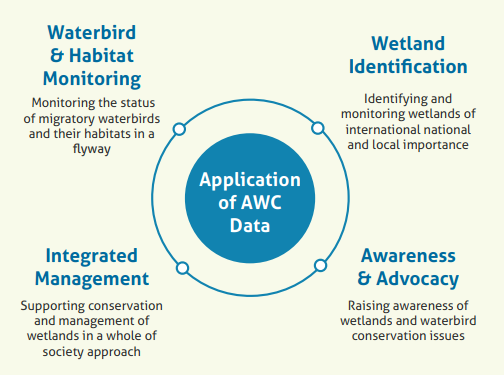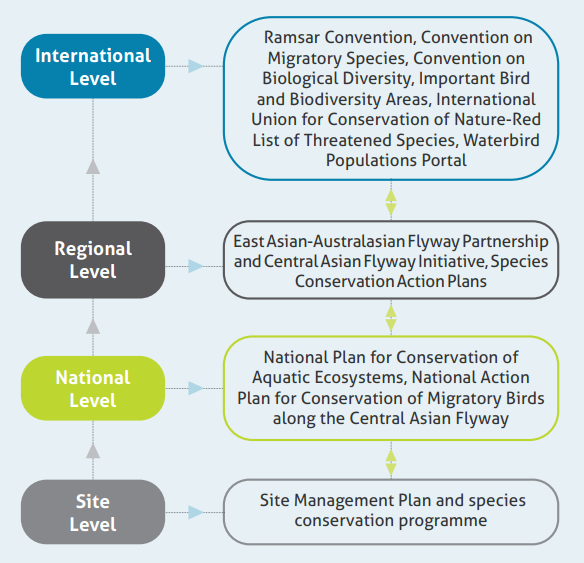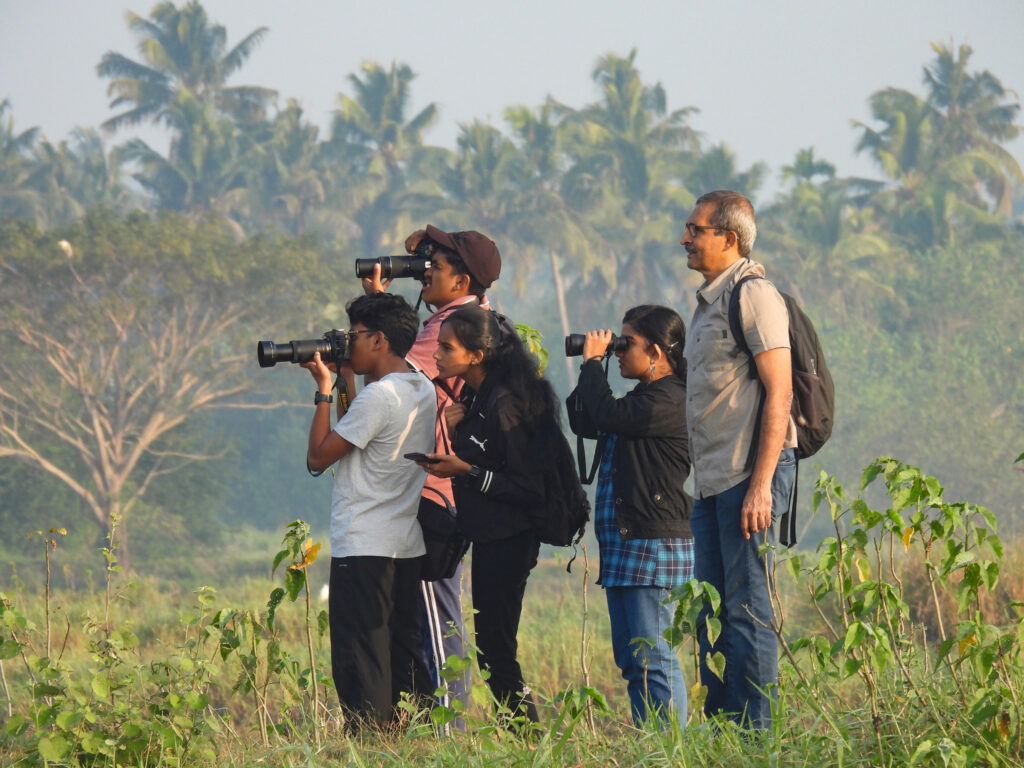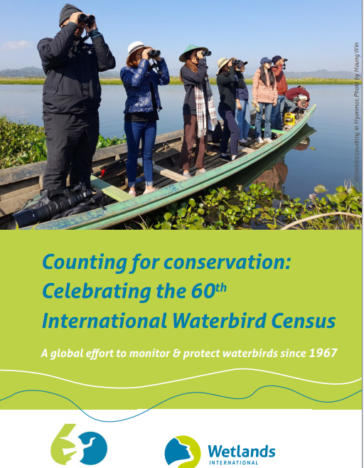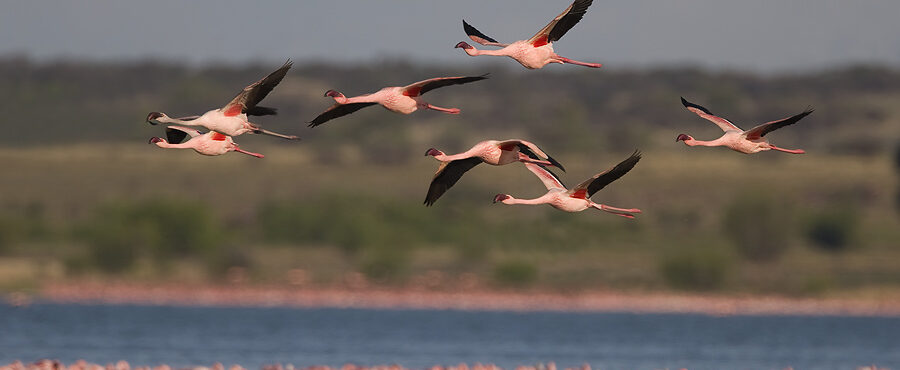
Asian Waterbird Census India
-
Asian Waterbird Census
-
Species
Promoting waterbird and wetland conservation in India
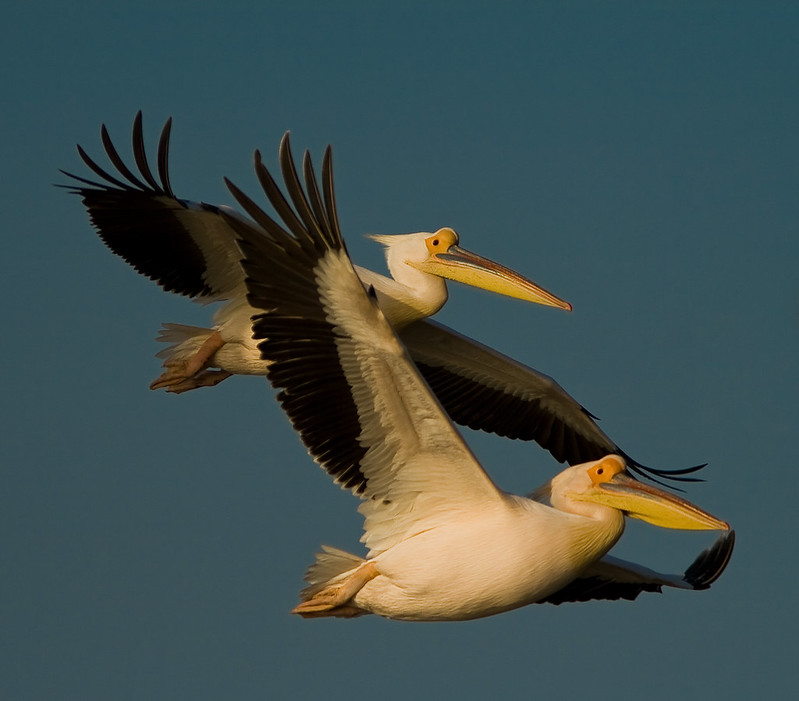
Since 1987, the Asian Waterbird Census (AWC) has mobilized thousands of volunteers across India to monitor waterbirds and wetlands during the northern winter. As part of the global International Waterbird Census led by Wetlands International, the AWC in India is jointly coordinated by Bombay Natural History Society (BNHS) and Wetlands International South Asia, with voluntary support from state-level coordinators and their networks.
2026 will be the 40th AWC and 60th IWC, so it will be a special year to contribute to the census. The recommended dates for the AWC are 03 – 18 January 2026, covering two weeks and three weekends, when we should encourage you to count waterbirds. These dates are for guidance only and counts from any date between December 2025 and February 2026 are very welcome.
Objectives
- Estimate waterbird population sizes and trends
- Identify and monitor priority sites for waterbirds
- Support wetland conservation and management planning
- Inform global agreements and national policies with waterbird status and trend data
- Encourage citizen participation in waterbird and wetlands conservation
In India, the AWC is announced each November with dates, data forms, and guidelines shared by Wetlands International South Asia, BNHS, and Bird Count India. The AWC is held during mid-winter, typically from the first Saturday to the third Sunday of January, with count assessments also accepted for December to end February for sites not covered in January. Furthermore, the AWC envisages conducting a multi-season census at AWC priority sites to support management planning and conservation actions.
The AWC is coordinated by the voluntary network of AWC India State Coordinators with active support from State Forest Departments, Biodiversity Boards, and bird enthusiasts
The AWC data is available to a wide range of government agencies and non-government organisations and contributes to conservation activities from the local to global level, including:
Applications and contribution of the AWC to national and international conservation frameworks
A slideshow with 2 images
The slider is set to loop infinitely.
Who contributes to the AWC?
The major contributors to waterbird monitoring are volunteer birdwatchers who participate because they find counting birds enjoyable and rewarding. Many thousands of volunteers join the count every year, making it one of the largest citizen science programmes in the world. The voluntary participation spans a diverse group of contributors, including government and non-government agencies, private organizations, and individual bird enthusiasts. Government-led species-specific monitoring programs also contribute to the AWC.
Participants
A slideshow with 2 images
The slider is set to loop infinitely.
How are the counts conducted?
Standardised counting is essential for monitoring waterbird trends. Annual visits to the same AWC sites on suggested dates using consistent methods support reliable population size estimates and long-term trend analysis. The waterbird count data and wetland site information are recorded on standardised census forms. AWC participants should contact their state/national coordinators for AWC implementation and reporting.
Protocol for waterbird counting: A general introduction to counting waterbirds for the International Waterbird Census. Updated December 2018.
Digitising Site Boundaries: Drawing the boundaries of a site or count area on a map is key to ensuring consistent coverage from year to year. This is a simple guide to the various options to make digital boundaries for sites and submit these with your counts. Updated December 2018. All AWC sites submitted to Wetland International with site boundaries or a simple latitude and longitude are visible on the IWC Portal. Zoom in to see your site.
Counting and reporting in India
A list of AWC India priority sites covering wetlands of international importance (Ramsar Sites), Important Bird and Biodiversity Areas, Protected Areas and Flyway sites is available for your guidance. The AWC coordinators and volunteers shall strive to cover the priority sites every year as per the AWC protocol.
Data submission in India can be done in one of three ways:
- AWC India Count and Wetland Assessment Entry Form (Excel format)
For this year, we are providing two options: the AWC India Count and Wetland Assessment Entry Form. In the first, the counter can use the dropdown menu option to enter the waterbird species. In the latter, these are pre-entered in a flat form, so only needed for the numbers to be entered. Either form can be used.
We also request that for each new site you cover, you kindly submit a simple outline/boundary map of the actual count area (check the AWC Site Network map to see if this site has been counted before and if a boundary exists; if so, use this as a guide for your count). Find the guidance to produce the map here.
- AWC India Wetland Assessment (MS Word)
This Word form is only for those unable to use the Excel format or eBird. We also request that for each site you cover, you kindly submit the AWC word form and the wetland boundary map to the AWC coordinators, with a copy to [email protected] and [email protected]. If there is no State Coordinator, kindly send them directly to [email protected] and [email protected].
- eBird and AWC India Wetland Assessment Google Form
For those familiar with eBird (and its mobile application), you can contribute to AWC by joining the AWC project on eBird. Previously, we used to ask volunteers to share the checklist with the ‘awcindia’ account. For each AWC checklist, fill out the Google Form Asian Waterbird Census India eBird Wetland Assessment Form (Google Form) to submit observations on wetland condition during the census. Do note that only eBird submissions accompanied by this form will be accepted and included in the national AWC overview.
What sites and species are counted under the AWC?
The AWC in India spans 29 States and Union Territories, covering diverse ecosystems from the Himalayas to coastal and floodplain regions. It includes a wide range of natural and human-made wetlands like lakes, reservoirs, rivers, mangroves, mudflats, rice fields, salt pans, and urban wetlands. Sites of conservation importance —Ramsar Sites, Important Bird and Biodiversity Areas, Protected Areas and Flyway sites are identified as AWC priority sites.
The AWC records a variety of resident and migratory waterbirds—such as ducks, geese, herons, storks, flamingos, and shorebirds—alongside wetland-dependent species, many of which are of conservation importance. A significant number of these species are migratory, travelling along the Central Asian Flyway and other key global migration routes.
How can you participate?
Raising awareness for waterbird and wetland conservation
We encourage you to actively raise local awareness of waterbird and wetland conservation issues around the census by contributing to or publishing news items and articles in print and electronic media. Kindly share links to articles to [email protected], so we can help promote them. We also encourage you to use social media (Twitter, Instagram, or LinkedIn) to actively publicize the census and your findings. We encourage you to include the hashtags #WaterbirdsCount, #AWC, or #AsianWaterbirdCensus where possible and tag us on @WetlandsInt @EAAFP so we can help to share this widely too. For your posts in India, tag @WetlandsInt_SA and @BNHSIndia.
Generating support for monitoring
Through the global Waterbird Fund www.waterbird.fund, we can now receive dedicated funds to channel to our network to fill geographic gaps and strengthen local capacity to implement and monitor waterbirds, as well as remote wetlands that are not being regularly counted. We aim to target new funding sources to secure contributions to support our network, including conservation organizations, governments, birders, hunters, and their clubs and associations, foundations, as well as the public with an interest in waterbirds and the environment. Do consider promoting the fund and donating to help strengthen monitoring in the country and region.

Downloads
Want to know more?
- Read our newsletters here.
- Browse our archive of Reports & Publications here.
- See all our Press highlights here.
- Get more info here – AWC Info and AWC 2026
For more information, reach out to Dhruv Verma ([email protected]), Apoorva Thapa ([email protected]) or Dr. P. Sathiyaselvam ([email protected]).

